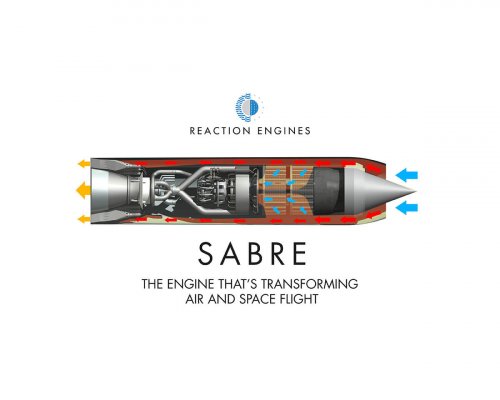- Joined
- 25 June 2014
- Messages
- 1,564
- Reaction score
- 1,499
@ Zootycoon
The air entering the compressor is pre-cooled by a helium cycle, I assume you are referring to the H2 which cools the used He via the secondary heat exchanger? That would make sense.
I appreciate your comments about the Mach number, however I suspect you err too far the other way. The quote says Mach 5, so it is taking the transit time from the Mach 5 entry point, through the shock compression steps and then on through the heat exchanger. Even if you call that say 5 metres in length, the number is still out by a factor of 10. The speed of sound, the local Mach number, depends heavily on temperature. As you say, the deceleration is not linear but mostly takes place in a series of steps before reaching the HTX. But these heat the gas, increasing the absolute value of Mach 1, so a local near-Mach 1 flow of superheated air is travelling faster than you might think, perhaps 50% faster, when it hits the HTX. Then again, a local near-Mach 1 flow of supercooled exit air is correspondingly slower than normal, approximately halved. So the deceleration is not as non-linear as your arguments might suggest and there is still a factor of 3 or so to account for. Close enough to be lost in the small print, perhaps.
The air entering the compressor is pre-cooled by a helium cycle, I assume you are referring to the H2 which cools the used He via the secondary heat exchanger? That would make sense.
I appreciate your comments about the Mach number, however I suspect you err too far the other way. The quote says Mach 5, so it is taking the transit time from the Mach 5 entry point, through the shock compression steps and then on through the heat exchanger. Even if you call that say 5 metres in length, the number is still out by a factor of 10. The speed of sound, the local Mach number, depends heavily on temperature. As you say, the deceleration is not linear but mostly takes place in a series of steps before reaching the HTX. But these heat the gas, increasing the absolute value of Mach 1, so a local near-Mach 1 flow of superheated air is travelling faster than you might think, perhaps 50% faster, when it hits the HTX. Then again, a local near-Mach 1 flow of supercooled exit air is correspondingly slower than normal, approximately halved. So the deceleration is not as non-linear as your arguments might suggest and there is still a factor of 3 or so to account for. Close enough to be lost in the small print, perhaps.




